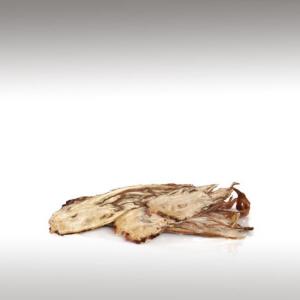
ANGELICA ESSENTIAL OIL (ANGELICA ARCHANGELICA) - ESSENTIAL OILS

BASE / GENERAL DATA
Information submited: May 29, 2015 Modified: March 7, 2018 By: OperaDreamhouse
Botanical Name: Angelica archangelica
Common Method of Extraction: Steam distillation
Part Typically Used: Roots, rhizome, seeds and and the herb itself
Color: Pale yallow
Consistency: Thin
Perfumery Note: Top to middle
Strength of Initial Aroma: Sharp, green, herbaceous, with peppery overtones.
Archangelica comes from the Greek word "Arkhangelos" (Arch - angel), due to the myth that it was the archangel Michael who told of its use as medicine.
It is called Angelica, since it normally flowers on the 8th May, which is St Michael the Archangel's Day, and for this reason it is often planted in monasteries and is referred to as "Angel Grass". It is a sweet herbal smelling oil that has a spicy undertone and is also known as European Angelica.
Angelica Archangelica, commonly known as Garden Angelica, Holy Ghost, Wild Celery, and Norwegian Angelica, is a biennial plant from the Apiaceae family, a subspecies of which is cultivated for its sweetly scented edible stems and roots.
Angelica is unique amongst the Umbelliferae for its pervading aromatic odor, a pleasant perfume entirely different from Fennel, Parsley, Anise, Caraway or Chervil. It has been compared it to Musk and to Juniper.
Even the roots are fragrant, and form one of the principal aromatics of European growth - the other parts of the plant have the same flavor, but their active principles are considered more perishable.
Angelica Archangelica grows wild in Finland, Sweden, Norway, Denmark, Greenland, the Faroe Islands, Iceland, mostly in the northern parts of the countries.
It is cultivated in France, mainly in the Marais Poitevin, a marsh region close to Niort. It also grows in certain regions in Germany like the Harz mountains, and in certain regions of Romania, like the Rodna Mountains, and some South East Asian countries like Thailand.
During its first year it only grows leaves, but during its second year its fluted stem can reach a height of two meters. Its leaves are composed of numerous small leaflets, divided into three principal groups, each of which is again subdivided into three lesser groups. The edges of the leaflets are finely toothed or serrated.
The flowers, which blossom in July, are small and numerous, yellowish or greenish in colour, are grouped into large, globular umbels, which bear pale yellow, oblong fruits.
Angelica only grows in damp soil, preferably near rivers or deposits of water.
The plant is said to originate from Africa and was introduced to Europe in the 16th century. From the 10th century on, Angelica was cultivated as a vegetable and medicinal plant and achieved popularity in Scandinavia in the 12th century and is still used today, especially in Sami culture.
Chemical structure:
The essential oilis composed of various chemical constituents such as: a-pinene, camphene, b-pinene, sabinene, a-phellandrene, myrcene, limonene, b-phellandrene, cis-ocimene, trans-ocimene, p-cymene, terpinolene, copaene, bornyl acetate, terpinen-4-ol, cryptone, b-bisabolene, rho-cymen-8-ol, humulene oxide, tridecanolide and pentadecanolide.
Common Method of Extraction: Steam distillation
Part Typically Used: Roots, rhizome, seeds and and the herb itself
Color: Pale yallow
Consistency: Thin
Perfumery Note: Top to middle
Strength of Initial Aroma: Sharp, green, herbaceous, with peppery overtones.
Archangelica comes from the Greek word "Arkhangelos" (Arch - angel), due to the myth that it was the archangel Michael who told of its use as medicine.
It is called Angelica, since it normally flowers on the 8th May, which is St Michael the Archangel's Day, and for this reason it is often planted in monasteries and is referred to as "Angel Grass". It is a sweet herbal smelling oil that has a spicy undertone and is also known as European Angelica.
Angelica Archangelica, commonly known as Garden Angelica, Holy Ghost, Wild Celery, and Norwegian Angelica, is a biennial plant from the Apiaceae family, a subspecies of which is cultivated for its sweetly scented edible stems and roots.
Angelica is unique amongst the Umbelliferae for its pervading aromatic odor, a pleasant perfume entirely different from Fennel, Parsley, Anise, Caraway or Chervil. It has been compared it to Musk and to Juniper.
Even the roots are fragrant, and form one of the principal aromatics of European growth - the other parts of the plant have the same flavor, but their active principles are considered more perishable.
Angelica Archangelica grows wild in Finland, Sweden, Norway, Denmark, Greenland, the Faroe Islands, Iceland, mostly in the northern parts of the countries.
It is cultivated in France, mainly in the Marais Poitevin, a marsh region close to Niort. It also grows in certain regions in Germany like the Harz mountains, and in certain regions of Romania, like the Rodna Mountains, and some South East Asian countries like Thailand.
During its first year it only grows leaves, but during its second year its fluted stem can reach a height of two meters. Its leaves are composed of numerous small leaflets, divided into three principal groups, each of which is again subdivided into three lesser groups. The edges of the leaflets are finely toothed or serrated.
The flowers, which blossom in July, are small and numerous, yellowish or greenish in colour, are grouped into large, globular umbels, which bear pale yellow, oblong fruits.
Angelica only grows in damp soil, preferably near rivers or deposits of water.
The plant is said to originate from Africa and was introduced to Europe in the 16th century. From the 10th century on, Angelica was cultivated as a vegetable and medicinal plant and achieved popularity in Scandinavia in the 12th century and is still used today, especially in Sami culture.
Chemical structure:
The essential oilis composed of various chemical constituents such as: a-pinene, camphene, b-pinene, sabinene, a-phellandrene, myrcene, limonene, b-phellandrene, cis-ocimene, trans-ocimene, p-cymene, terpinolene, copaene, bornyl acetate, terpinen-4-ol, cryptone, b-bisabolene, rho-cymen-8-ol, humulene oxide, tridecanolide and pentadecanolide.

SPIRITUAL PRACTISES DATA

MEDICINE / HEALTH DATA

BEAUTY / COSMETICS DATA

FOOD / COOKING DATA
COMMENTS
No comments.


